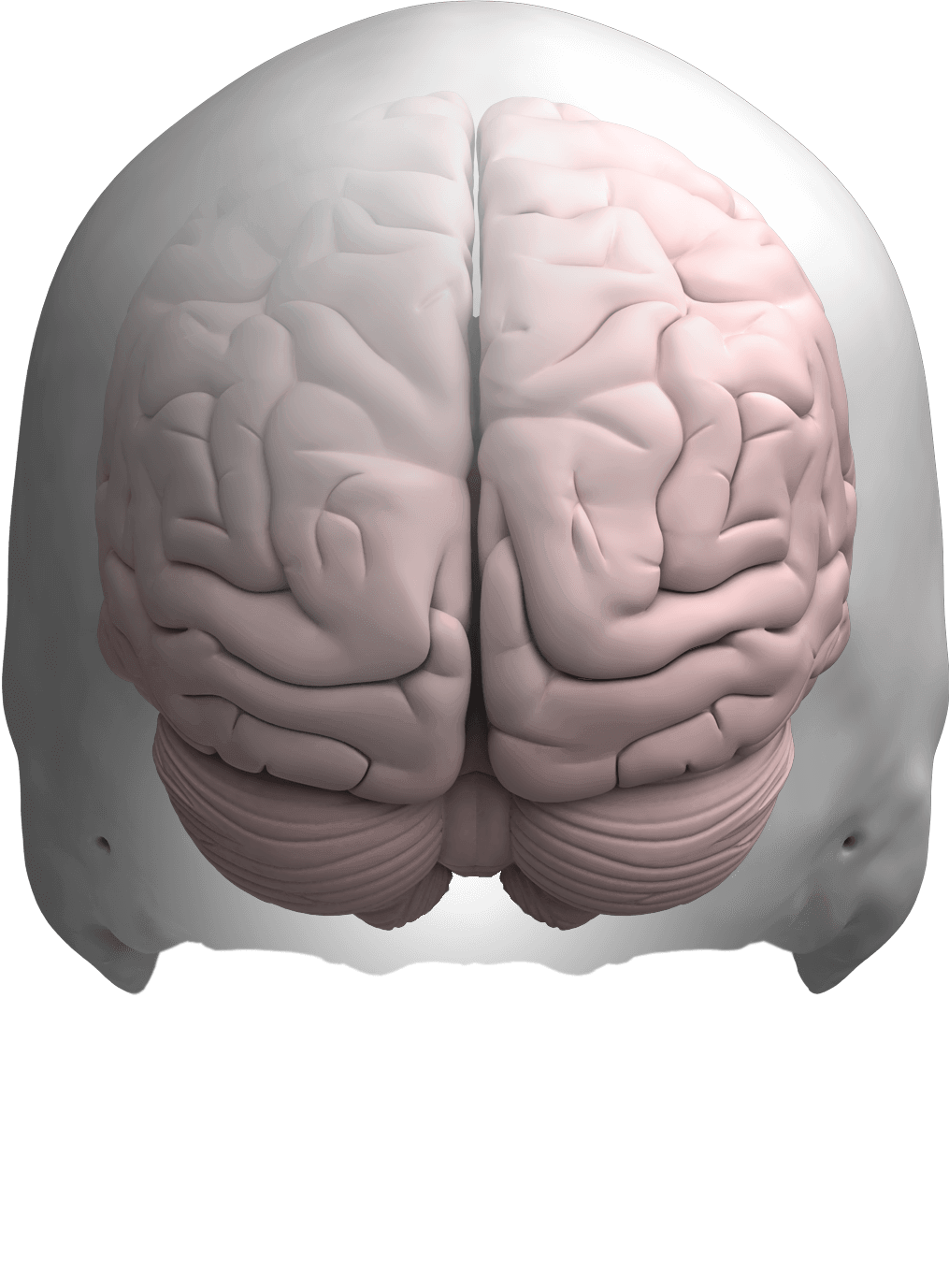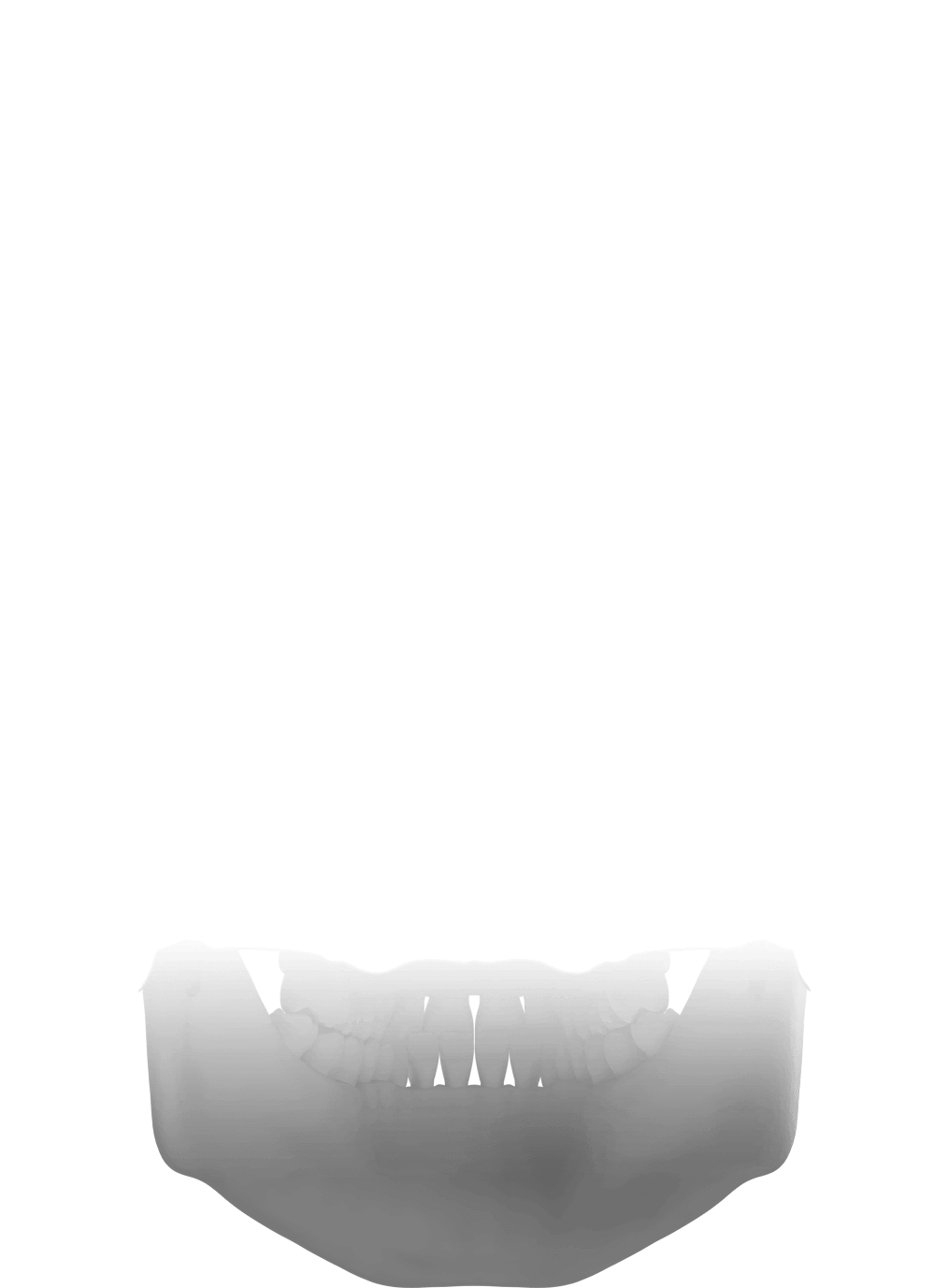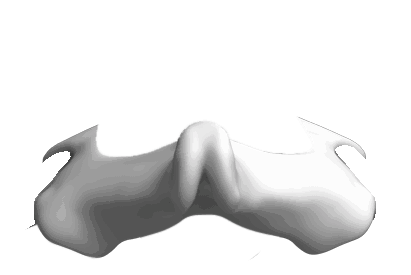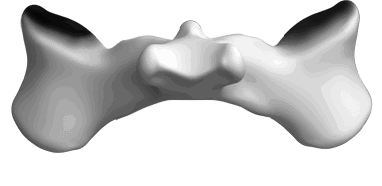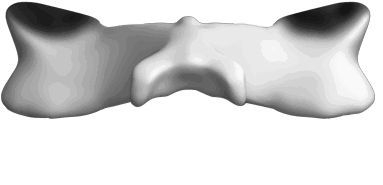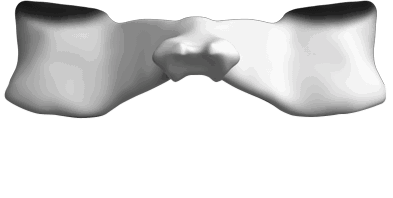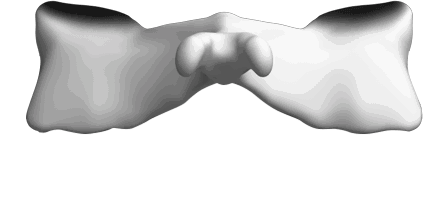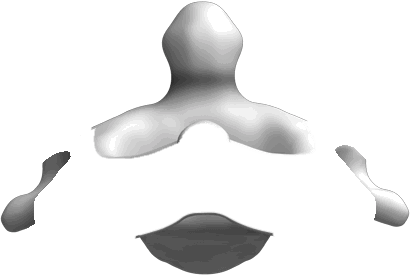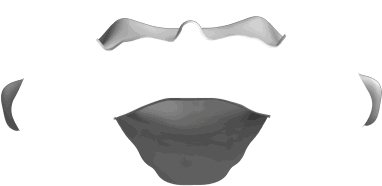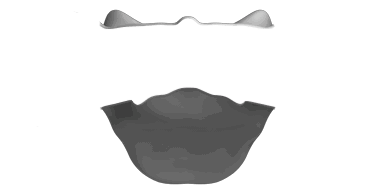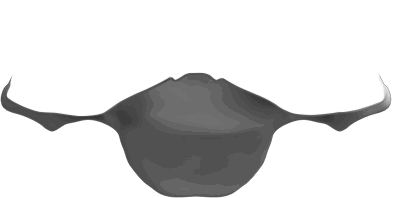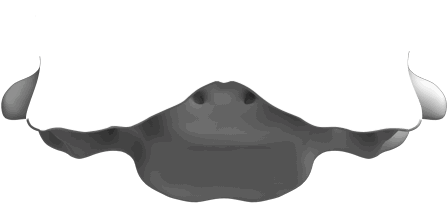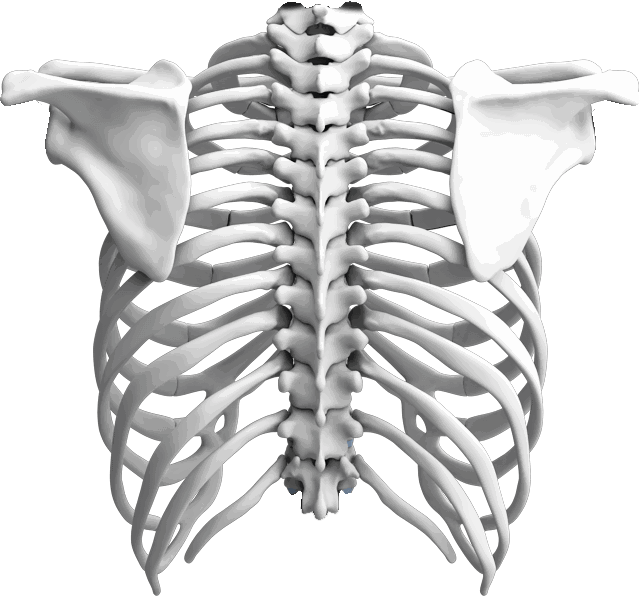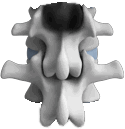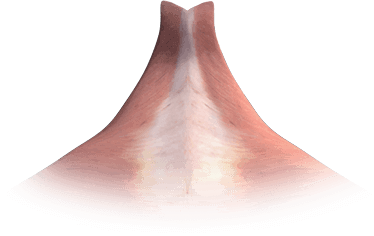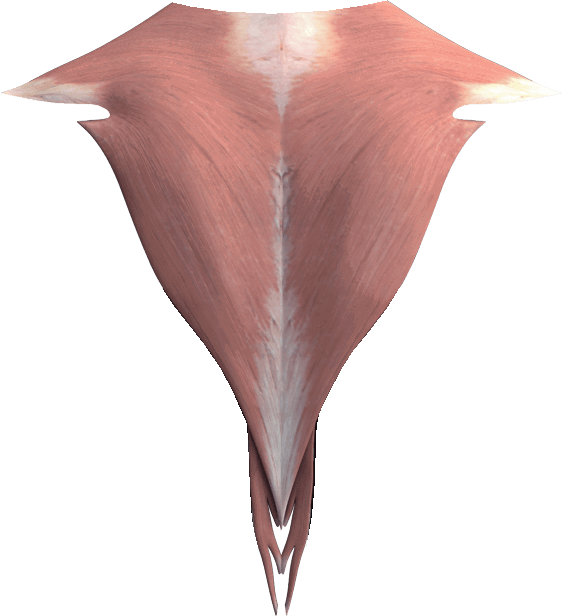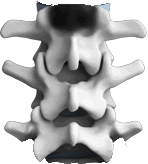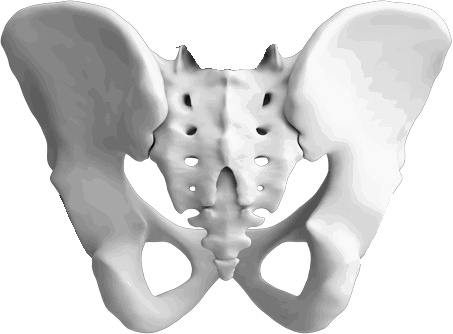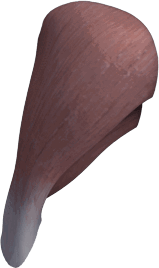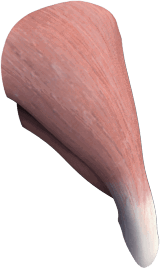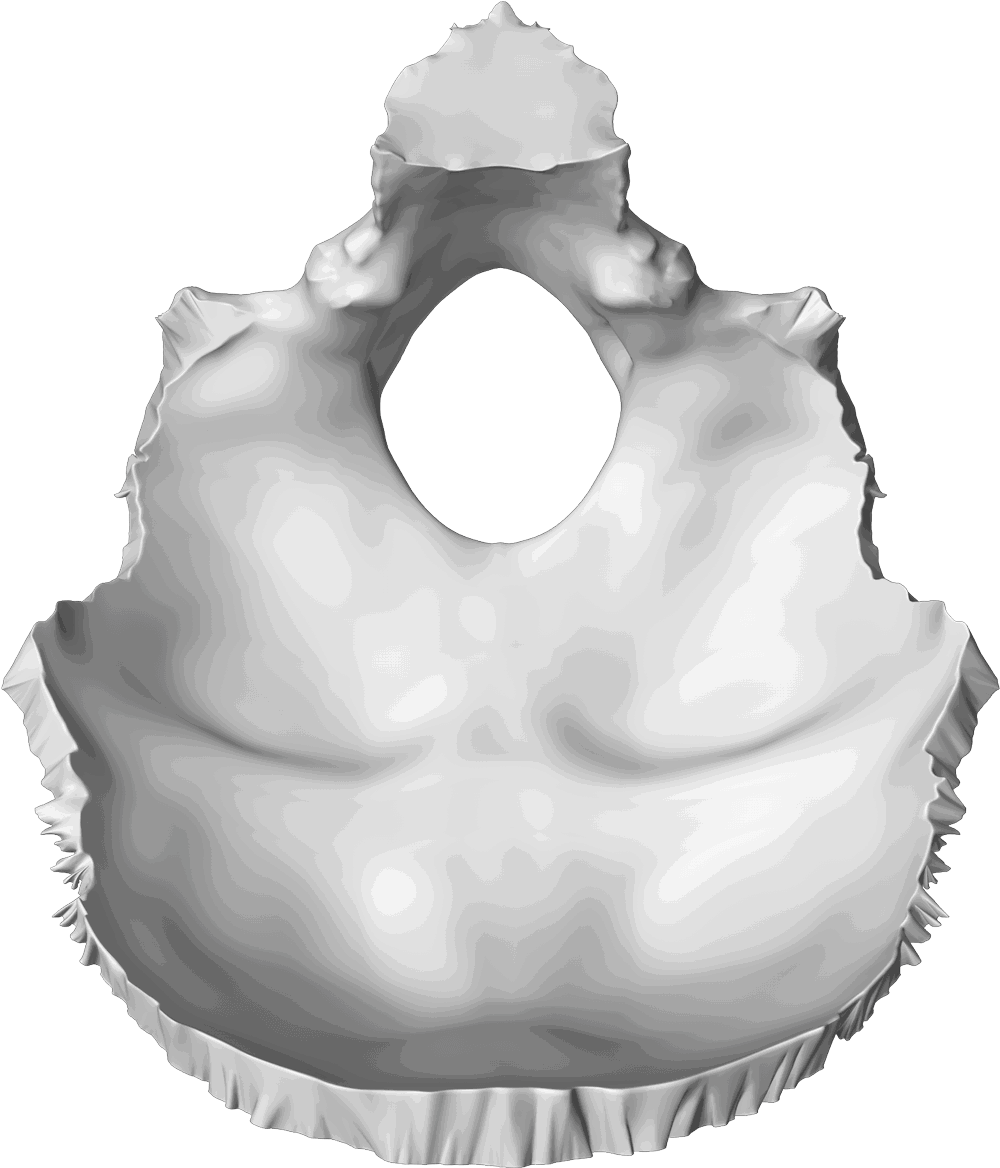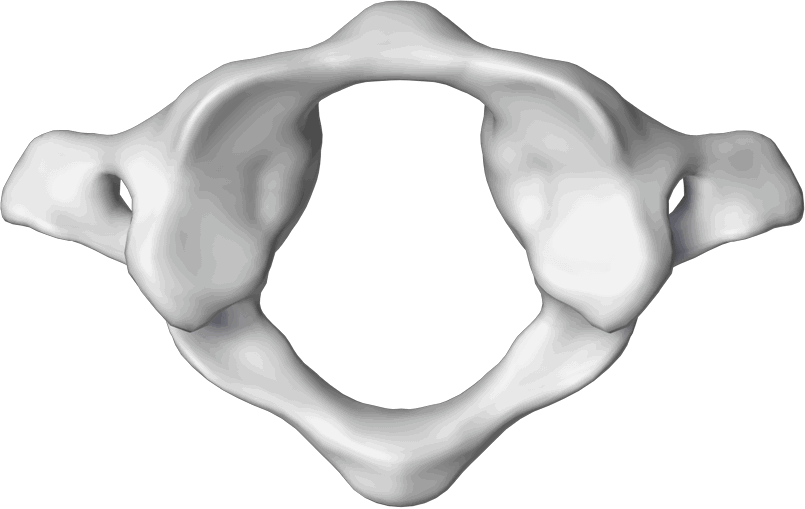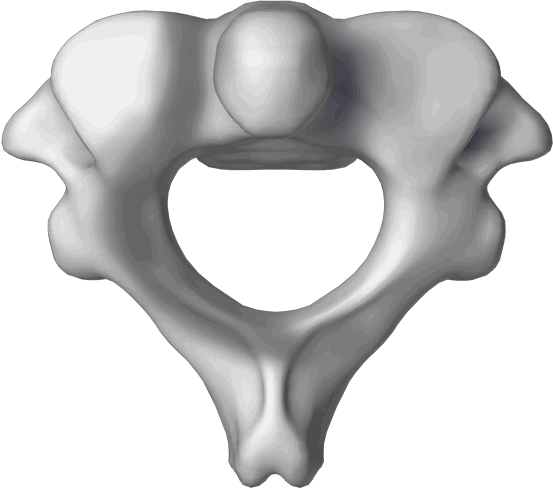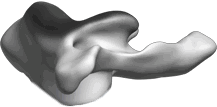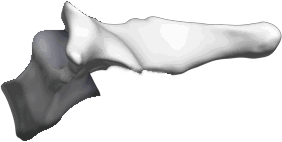Upper Neck 101
A Complex Problem
The weakest region of the human spine is where the head meets the neck! This is due to the fact that half of all of our head movements occur between the skull and top two vertebrae. Injury will buckle this region of the spine in very large and complex ways, tearing loose connective tissue, ligaments, and muscles responsible for maintaining normal posture and head alignment. The result is the misalignment you see here where the head, neck, and top vertebra (atlas) have shifted sideways from their normal position. This causes stress and altered nerve flow to and from the brain and creates posture distortion and body imbalance as the entire spine shifts off-center. See “How Did I Get This Way?”.
A Complex & Gentle Solution
Utilizing a very precise system of analysis based on math and physics, doctors are able to calculate the precise reduction pathway and corrective force necessary to gently bring the head, neck, and atlas back into alignment (represented by the correction arrow when you click on the animation) with very little force and no “twisting” or “popping” of the neck. In fact, most patients don’t even feel the adjustment. As the correction in the upper neck is achieved, the entire body is brought back into balance as stress on posture nerves feeding the brainstem is relieved. This is why people with problems even in the lower part of their body respond well to the Orthospinology correction.
A Lasting Difference
The upper neck is the most complex and difficult region of the spine to align, but when correction is achieved, the results can be simply amazing. Patients notice changes throughout their entire body as normal alignment and posture are restored. It takes a tremendous amount of training to deliver a quality Orthospinology correction but hurting people need and deserve the best care possible, and that’s why upper cervical doctors have dedicated their lives to the mastery of this procedure.
How Did I Get This Way?
As you can see here, injury also twists the upper neck adding to the complexity of the misalignment and compounding stress to the brainstem. The misalignment you see is the result of one or more past injuries. Injuries can often be traced all the way back to childhood: The header off the top bunk, a tumble down the steps, the fall off the bike, hayloft, or backyard tree. Or perhaps it was that teenage gymnastics injury or auto accident? Think back, and you’ll probably come up with a few possibilities of your own.
Regardless of the cause, ninety-five out of a hundred people are left with neck misalignment and posture distortion by the time they reach adulthood. After the initial pain of an injury subsides, an upper neck misalignment can remain pain-free for years until a new injury occurs or body imbalance finally takes its toll in the form of degenerative disc disease, arthritis and/or stenosis. See “How Does This Affect My Health”.
The Nervous System "Grand Central"
The lower end of the brain is called the brainstem because it descends into the upper neck. Every nerve that travels down the spinal cord has to pass through the fragile donut shaped vertebra that wraps around the brainstem called the atlas! For this reason, the upper neck is our neurological “Grand Central Station.” Here’s why:
Posture And Body Balance
The lower brainstem controls posture and balance. Misalignment and stress in the upper neck cause the muscles along each side of the spine to pull unevenly which shifts the entire body off-center. (See “The Bigger Picture” to learn how stress on these posture control centers impacts the whole body.)
Blood Pressure, Respiration and Heart Rate
The neurological centers for control of these body functions are located in the lower brainstem and can be adversely affected by upper neck misalignment. Recent research has proven the Orthospinology correction helps people with high blood pressure. (Google “Orthospinology” and “blood pressure” to view the results of this research.)
Sleep / Mood
Serotonin is a chemical produced in the lower brainstem. Serotonin influences various functions, including regulation of mood, sleep, appetite, muscle contraction, and some cognitive functions including memory and learning. Upper neck misalignment causing stress on the lower brainstem can have a dramatic effect on a person’s energy and overall sense of wellbeing as is the case with Chronic Fatigue Syndrome and Fibromyalgia.
Immune Function
The Autonomic Nervous System controls all of the body functions that we don’t have to think about. The Sympathetic Nervous System is the part of our Autonomic Nervous System that becomes more active during times of stress and is often called the fight-or-flight response. Upper neck misalignment creates long-term activation of the Sympathetic Nervous System, which is proven to suppress the body’s Immune System.
Digestion
The Vagus nerve is very influential in regulating digestion and elimination. This important nerve is often affected by misalignment of the upper neck because it passes right next to the atlas vertebra as it comes down from the brain.
Head and Facial Problems
Cranial Nerve dysfunction can result in problems such as Trigeminal Neuralgia, Bells Palsy, Meniere’s Disease, Sinus Problems, Headaches, Ear Pressure, Dizziness, etc. Patients with these problems often respond to the Orthospinology correction since cranial nerves have tracts that descend into the upper neck. Most recent research is beginning to show how upper neck misalignment impedes cerebral spinal fluid flow and blood flow in and out of the brain!
The Bigger Picture
Injury to the upper neck has a global effect on the body. When the head shifts off the top of the neck due to injury, the body’s righting reflex moves the body into a distorted posture to bring the head back to level. This shift causes stress and miscommunication affecting posture control centers in the lower brainstem, where it passes through the top vertebra. Posture muscles that run along one side of the spine pull harder than muscles on the other side resulting in the picture you see here.
Body imbalance has a very negative long-term effect on spinal discs. When the body’s weight is not distributed evenly across the discs, premature degenerative disc disease, herniation and even a closing down of spinal nerve canals (stenosis) can result. Just as driving your car with the front end out of alignment causes premature tire wear, long term body imbalance causes your spine to age quicker. The difference between a 75-year-old on the golf course and a 75-year-old pushing a walker is usually found in their spines!
Notice the short leg, uneven hips, high shoulder, and head tilt. Look closely at your friends and family as they face you, and you may be able to tell if they should be referred for an evaluation. Click the animation to see how a small, strategic atlas correction restores balance and alignment to the entire spine!
How Does This Affect My Health?
The brain and nervous system controls and regulates every function of the body, most of which we don’t consciously think about, such as heart rate, breathing, digestion, etc. That is why the nervous system is the very first part of the body to develop inside the mother’s womb. To live a healthy life, the spine must protect the nervous system so that every cell in the body is 100% connected to the brain. Injury and damage to the spine itself interrupt the flow of energy to and from the brain. The common term for this nerve stress caused by misalignment of the spine is subluxation. As stated earlier, the upper neck is especially vulnerable to injury and subluxation. Combined with the fact that the brainstem, which is the nervous system’s “Grand Central Station,” passes through the first cervical vertebra, problems here tend to have a more detrimental effect on the body.
- Misalignment of the spine can cause direct pressure on the spinal cord and the delicate nerves that exit between each vertebra of the spine. As a result, any body part served by these nerves that loses its flow of energy to and from the brain will not function properly. For example, if the nerve that supplies the stomach is stressed, problems such as indigestion, heartburn, reflux, bloating, and gas can occur.
- Body imbalance creates an ongoing structural and neurological stress to the body. The body responds to stress by activating the sympathetic nervous system. Long-term sympathetic nervous system activity has been proven to cause the immune system to be suppressed. In other words, your immune system doesn’t work as well when the body is under long-term stress and imbalance.
- Long term body imbalance causes premature aging and degeneration of the spine itself. Arthritis is the more common term for this wear and tear. As spinal degeneration becomes advanced, the vertebrae themselves encroach upon the spinal nerves causing them to slowly lose their ability to transmit vital brain messages. Doctors refer to this condition as spinal stenosis.
Is Your Spine Older Than You?
The human body is designed to live to be over a hundred years old! Unfortunately, a majority of people are robbed of their “golden years” by a spine that ages prematurely. Honestly, most people understand more about taking care of their teeth than their spine! The progression of spinal degeneration is explained below. Any idea where are you fall?
Phase I: 5-15 Years of Adaptation
Uncorrected spinal trauma results in loss of normal curve, disc narrowing, and subtle spine and nerve malfunction. Because the body is so adaptable, this early phase can exist without the warning of pain or other symptoms. If left uncorrected, the degeneration continues.
Common symptoms of Phase I Degeneration include:
- Headaches
- Neck Pain
- Strained Muscles
- Shoulder Tension
Phase II: 15-30 Years of Adaptation
Recognized on x-ray by visible bone spurs and rough edges of the vertebrae. Abnormal bony growths distort the shape and function of the vertebrae and cause stress to discs, joints, and ligaments. Breakdown of these soft tissues results in lack of normal joint movement, inflammation, and interference to nerve flow.
Common symptoms of Phase II Degeneration include:
- Arthritis
- Disc Disease
- Degenerated Joints
- Fatigue
- Joint Pain
Phase III: 30+ Years of Adaptation
A lifetime of neglect may cause the eventual fusion of the malfunctioning joints. Atrophy, permanent nerve damage, and soft tissue degeneration are prevalent. Reduced mobility and impaired nervous system function diminish one’s quality of life.
Common symptoms of Phase III Degeneration include:
- Chronic Pain
- Irreversible Damage
- Spine Disease (stenosis)
- Relief Care Only
Remember: The difference between the 75-year-old swinging a golf club vs. the one pushing a walker? A spine that aged prematurely! An old saying in our profession could be adapted to read: “Orthospinology adds years to life and life to years!”
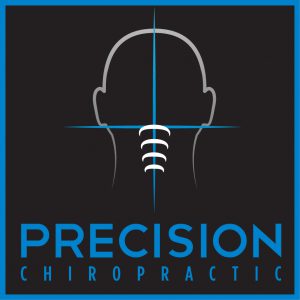
Precision Chiropractic
4880 Thompson Parkway
Suite 120
Johnstown, CO
80534
